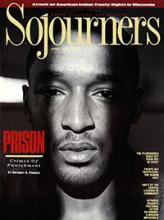My firsthand glimpse of prison was an experience for which there was no adequate preparation.
I waited in line in the cramped prison office to sign in. That process included having my left hand stamped with an ultraviolet light, walking through a metal detector, emptying my pockets, having my briefcase searched, and finally being patted down by a guard.
I made the mistake of taking my tape recorder out of my briefcase. No tape recorders or cameras are allowed in the prison. The guards at the front office said they would hold it for me until I returned.
I had been granted permission to accompany the members of the National Commission on Crime and Justice, a group of 20 African-American, Asian-American, Latino-American, and Native American activists, academics, and attorneys convened by the American Friends Service Committee (AFSC). We were to inspect the Central Facility at the Lorton Correctional Complex, operated by the District of Columbia Department of Corrections, in Lorton, Virginia.
Ninety-eight percent of the inmates at Lorton are African American. Whites and Hispanics make up the remaining two percent. I saw African-American prisoners, and I saw Hispanic prisoners, but I saw no white prisoners. I did see a lot of white guards.
Johnny Showell, assistant administrator for programs at Lorton, and our guide, led us first through the Industrial Division where license plates are made. I watched one inmate place new license plates in plastic bags. That was his job. It's an act of unskilled labor that will not get him a job when he leaves prison, pay him a decent wage, instill in him any sense of accomplishment, or keep him from returning to prison.
Read the Full Article

